Description
galuma maymuru-dec
Earth pigments on Stringybark hollow pole
204 x11.5cm
Year: 2014
ID: 4853I
Ŋuykal
Galuma produced this work with reference to her own country at Djarrakpi which is at the base of Cape Shield, the northern perimeter of Blue Mud Bay. This Maŋgalili country is also site of one of the Ancestral ceremonial/burial grounds called the Yiŋapuŋapu.
The Yiŋapuŋapu is a low relief sand sculpture designed to keep any contamination of death at bay as traditionally the body of the deceased was placed within it for initial mortuary rites, to cleanse the bones of dangerous spirits held within the body tissue. A metaphor for this action of cleansing is utilised by the Maŋgalili in their sacred paintings by way of depicting Mirriya or Gunyan the sand or ghost crab picking the bones of a fish carcass on the beach. Contemporary Maŋgalili on the beaches of Djarrakpi put their food scraps in one place when at camp – the secular Yiŋupuŋapu. This painting shows the totemic Mirriya which feeds on the Ancestral remains of the parrot fish Yambirrku. The miny’tji or sacred clan design for the sandscapes of Djarrakpi both adorn and surround the crabs. In traditional mortuary ceremony for this clan the last act is to catch and eat Yambirrku and dispose of the bones in the ceremonial sand sculpture for the crabs to pick clean overnight.
This work is clearly part of the genre of works which she produced in 2013 which emphasise large fields of crabs. An understanding of the work relies upon a basic outline of the Maŋgalili clan’s ‘outside story’ as follows.
It was in the wangarr, ancestral times, when the Guwak (Koel Cuckoo) men, Munuminya and Yikawaŋa, sitting under the shade of the sacred Marawili (a Ganyawu or bush cashew) tree, instructed the ancestral koel cuckoo Guwak to lead the Maŋgalili people to this new place they had established for them at Djarrakpi. Having seen the people settled in their new homeland they announced to the Maŋgalili their farewell, that they, the Guwak men were to travel out to sea, to a place in the sky and that they would become stars which would shine out of the night sky.
So a canoe and paddles were made and their journey began by paddling down the Milŋiyawuy River which flows into the Blue Mud Bay near Djarrakpi. In the bay, at a place of significance, strong winds developed and a wake from the ancestral turtle capsized the canoe – the men drowned. At this place is the site of Yiŋalpiya, the freshwater crocodile’s nesting place. This same place is the spirit source for Maŋgalili people.
The Guwak Men, it was said, had attempts made on them to be rescued. A special log Milkamirri or Bandumul, containing mangrove worms offered itself as assistance. Ŋuykal the ancestral king fish is also manifest in this form. Even the rock cod they had caught for their journey offered assistance, as did Dhäla the sea creature. It was to no avail however as the men had destined themselves as offerings, to the night sky where they and subsequent Maŋgalili souls are seen today in the Milky Way.
These Maŋgalili souls attain their celestial position by means of possum fur string Burrkun that connects Djarrakpi at the site of the Marawili tree to night sky. Miliyawuy or Milŋuya as the Milky Way is also looked upon as the nesting place for the ancestral crocodiles Yiŋalpiya.
The night bird Guwak became lonely so he set out to find his friend Marrŋu, the possum, to talk to. During the day he found him in several places but Marrŋu would not talk to him because it was daylight. Ever since the Guwak only calls at night as he knows that this is the only time that Marrŋu will answer him.
During his travels that day, as he flew along the coast, he saw the king fish Ŋuykal and feeling hungry called out “Ŋuykal if you will jump out of the water onto the sand I will give you some land.” Ŋuykal did so and was gobbled up by the Guwak. At long last he came to Djarrakpi and in the moonlight he saw the sacred tree on the cliff. As he was very tired it was with great relief that he landed in the top of the tree and noticed the Gunyaṉ crabs playing in the sand at the foot of the cliff, running from their holes through the parallel lines of foam left by the ebbing tide.
As he sat looking about, he heard a noise and realised Marrŋu was inside the hollow tree. He then sent Garanyirrnyirr, the cicada, down the tree with a message to Marrŋu who came up the tree to the Guwak and they spent the night talking about the sacred places of the Maŋgalili. The designs underneath the figurative imagery all relate to Djarrakpi. The tracks of the possum and the crabs are visible in that design.
They then sent Garanyirrnyirr with a message to Nyapaliŋu and asked her to come with them into the Maŋgalili country. The possum travelled ahead and left a path for them to follow. Before the Guwak and Nyapaliŋu came together at Djarrakpi, when they met at the sacred possum tree Guwark had already travelled extensively with Garanyirryirr his messenger, and named sacred places for the Maŋgalili.
Nyapaliŋu is a somewhat mystical being hovering in the background of the mythology; information about her is very sparingly given and only after many years of contact. She taught the Yolŋu women many things; how to look for wild bulb ‘yoku’ and prepare it for eating, how to make bark string and weave pandanus palm baskets. She came to the mainland from Groote Eylandt, travelling in a giant sized bark water container with a band of specially trained spirit women known as Wurrathilaku, who eventually split up to become the different language and clan groups of the Yirritja moiety, including the Maŋgalili.
A more important part of Nyapaliŋu’s work was naming flora and fauna and making them Yirritja totems, naming sacred places and making maḏayin. The digging stick (wapitja) which she made for stripping bark, is a very important symbol on the bark paintings as with this she made all the Yirritja waterholes.
The death of the two Ancestral Hunters, the founders of Djarrakpi for the Maŋgalili clan of Yolŋu, initiated the first rites of mortuary for these people. The body of the deceased is ceremonially placed at the central station of the sand sculpture – Yiŋapuŋapu. This work has reference to this ceremony, the Guwak Ancestors and the role played by the utilisation of the Yiŋapuŋapu at Djarrakpi. Placing the body within the confines of the sand sculpture keeps the contamination of death at bay.
Furthering this concept has a notion of cleansing whereas over time with the agents of nature the soft tissues of the body returns to the mother (earth), the bones are laid bare and clean for the final rites of passage back to the Maŋgalili reservoir of souls. The gunyan (sand crabs) play a role in this stage. Djarrakpi is located at the end of a remote cape on the western side of the Gulf of Carpentaria. Here there are several extremely significant landmarks for the Maŋgalili. On top of a sandy rise, above the sandunes is said to be the ‘dangerous’ site of the Guwak’s Yiŋapuŋapu at Djarrakpi.

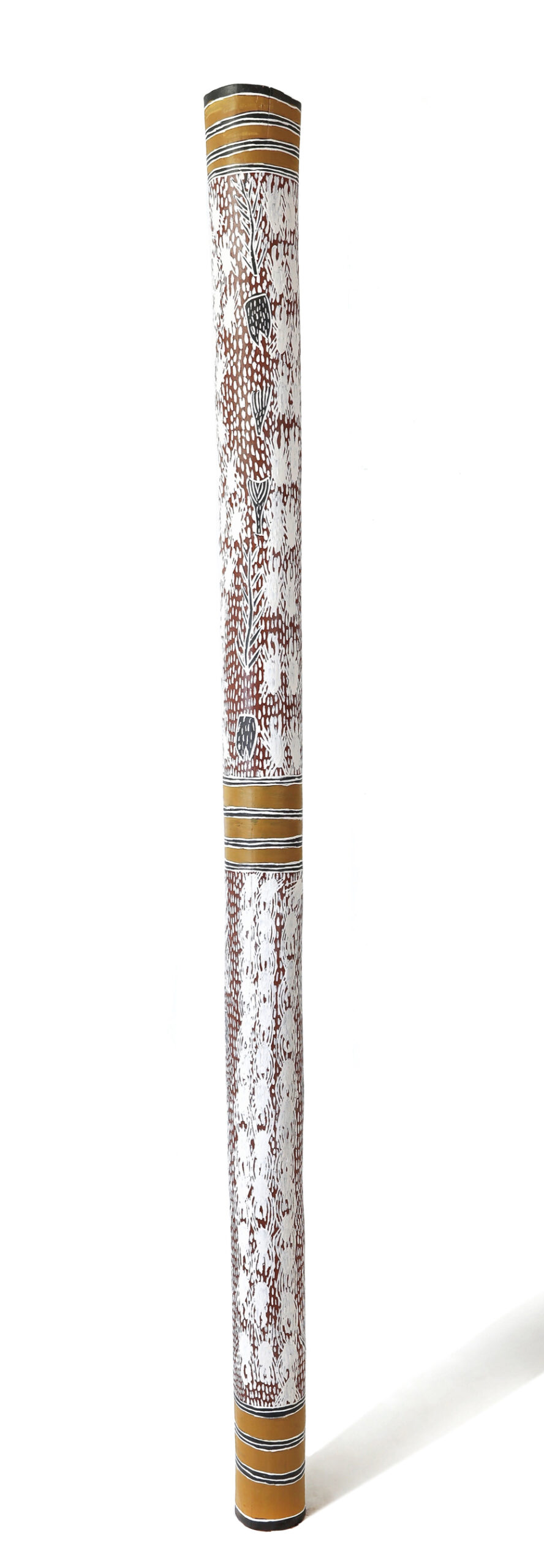
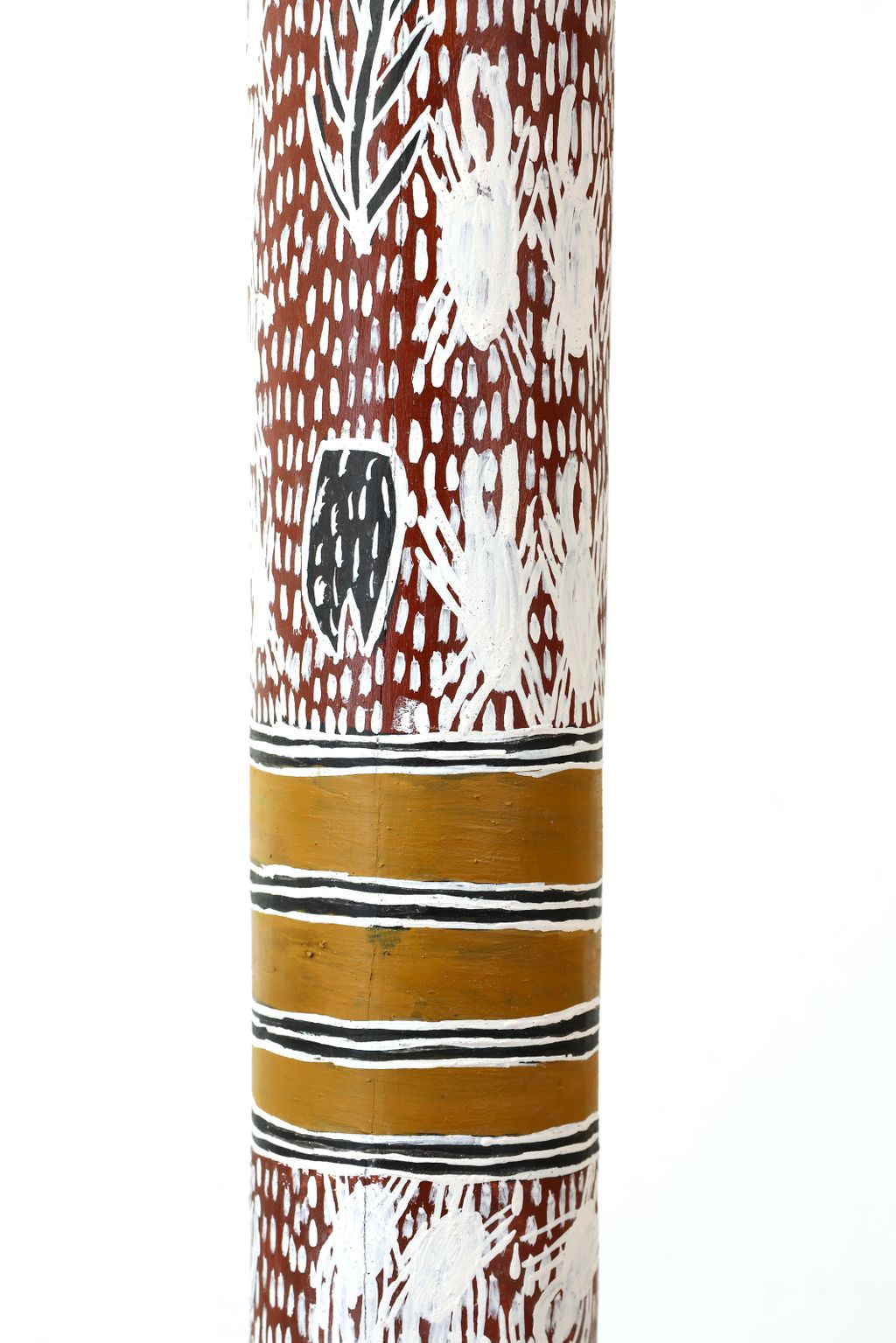
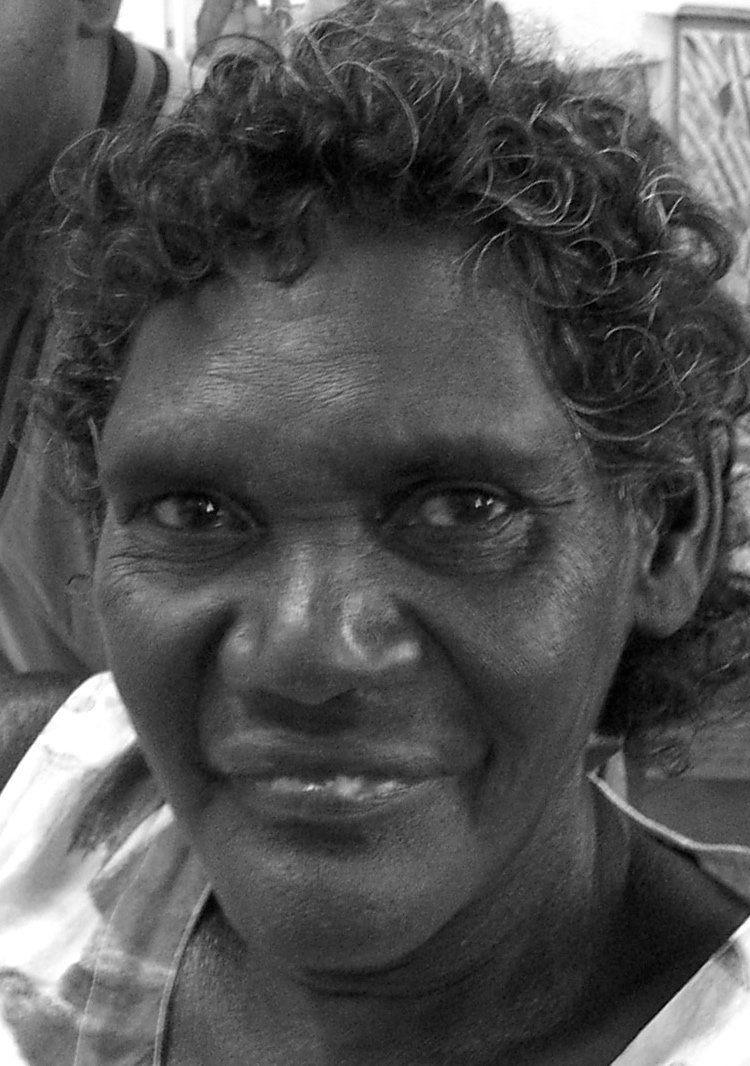
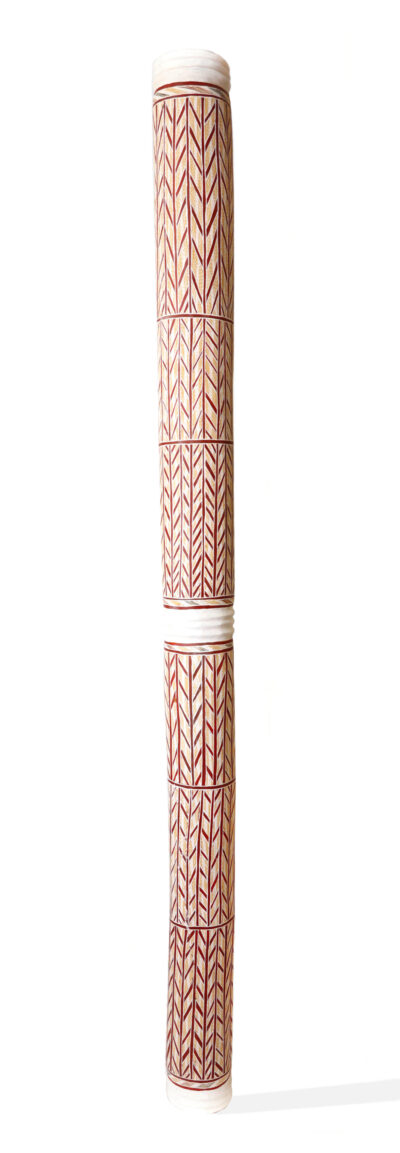
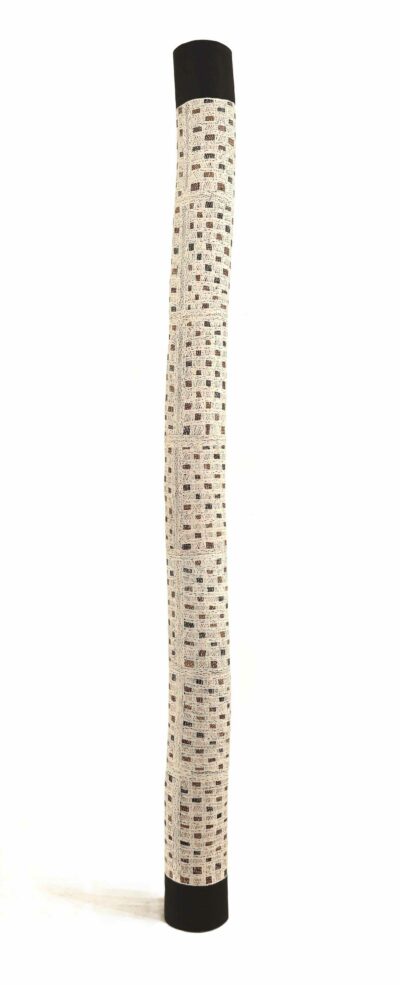
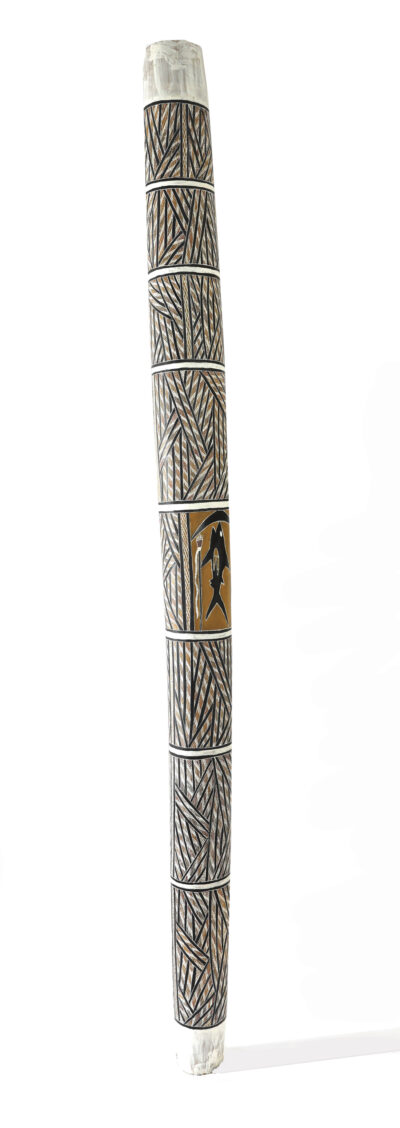
Reviews
There are no reviews yet.